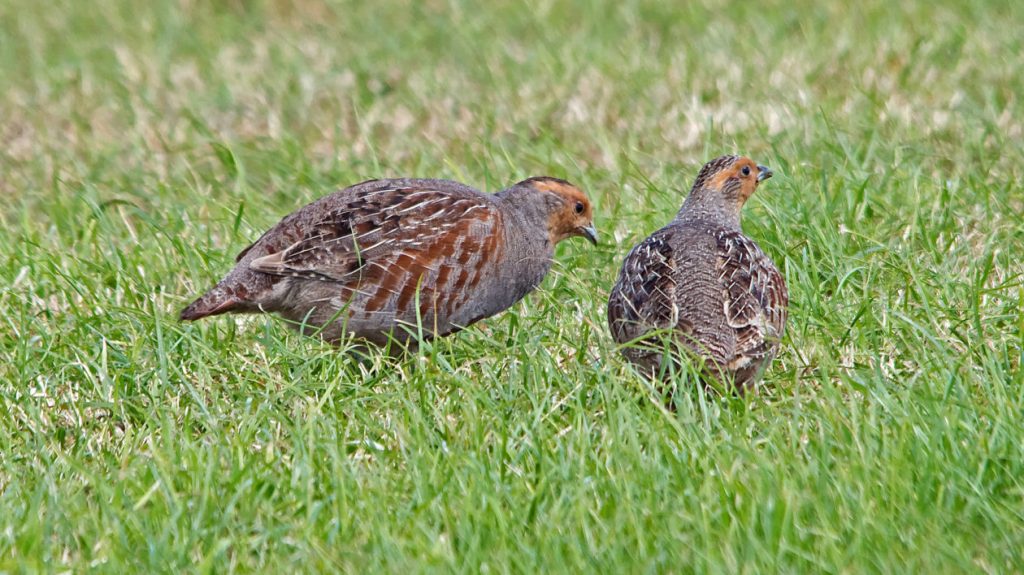
By Matthew L. Miller
“The Twelve Days of Christmas” is not only an enduring holiday tune, but also one that has given rise to endless analysis. The peculiar list of gifts just lends itself to questions, one of the most popular being: What would that all cost today? (It’s $41,205 this year, according to the Christmas Price Index, an economic analysis project that calculates the cost each year. Seriously.)
The song was first published in England in 1780, although it likely originated as a folk song much earlier than that. It may well have started as a memory game at parties. It underwent many revisions, and most early versions did not include the music. The version many of us are familiar with is a 1909 arrangement.
But the most interesting version is the first. What is up with the partridge in a pear tree?
More specifically: What bird is that partridge? And, for fun, I’ll look at which ones might be most likely to be found in a pear tree.
What exactly is a partridge? There are at least 46 birds with “partridge” in their accepted common name. They are mid-sized ground-dwelling, ground-nesting birds. All are members of the taxonomic order known as the Galliformes, which also includes pheasants, chickens, turkeys, quail, peafowl, guinea fowl and quail. This is a well-known group of birds. They appear frequently in myth and story.
Chukar
The chukar may be the quintessential partridge: a plump bird often found in open, grassy country. The chukar flies fast, but more often it runs across rocky terrain.
PEAR TREE POTENTIAL: Not going to happen. You will see chukars calling from large rocks, but not from trees.
Gray Partridge
The gray partridge is the most common partridge of Europe and the United Kingdom, where it is often found on farms and stocked for hunting. I almost never get a relaxed viewing of gray partridge. Usually a covey bursts out as I’m walking, leaving me only a glimpse as they noisily fly away. Few people seem to notice them, even though they’re common.
PEAR TREE POTENTIAL: Maybe, maybe not. This is the partridge that would have been most familiar to the originators of the song. So it’s the likeliest candidate. Unfortunately, gray partridges aren’t associated with trees. At all. I have never seen a gray partridge within 100 yards of a tree.
Snow Partridge
This is a particularly beautiful partridge, found in the higher Himalayas above 9,000 feet elevation. It often lives in open habitat at the edges of glaciers.
PEAR TREE POTENTIAL: None. The snow partridge is found above the tree line. It is far more likely to take cover by hiding in a cave than flushing into a tree.
Madagascar Partridge
There are a great variety of cool and little-known partridges around the world. This one is endemic to Madagascar; males have striking coloration on their face and chest. In many ways it looks like a cross between a partridge and a quail.
PEAR TREE POTENTIAL: Not likely. The Madagascar partridge, like many species, lives in undergrowth. A trip to see one, though, would have to rank as one of the ultimate gifts for the nature nerd on your list.
Ruffed Grouse
The ruffed grouse would not have been mentioned in a 1700s European folk tune, but perhaps it’s a better fit. I associate ruffed grouse with walks in winter woods, often scaring me witless when they go thundering out of a pine tree.
Ruffed grouse are also known for making “snow angels.” When the snow is deep, grouse seek cover under it.
PEAR TREE POTENTIAL: Very good. The ruffed grouse may not be a real partridge, but it roosts in trees and has an affinity for abandoned orchards.
Long-Tailed Tree-Quail
This interesting bird is commonly called the long-tailed partridge. The Americas are home to a number of species of quail. In general, they’re smaller than partridge but definitely bear a distinct resemblance. The quail of the United States are quite familiar to most birders, but the tree-quails are not.
PEAR TREE POTENTIAL: Marginal. The long-tailed tree quail looks quite partridge-like. It is often found in dense forests, but it prefers to stay on the ground, in the undergrowth.
California Quail
Another quail that is sometimes colloquially called a “partridge” is the northern bobwhite. As is the case for the ruffed grouse, this can be seen in historic hunting literature.
A flock of California quail is scratching around my backyard as I write this. They are a cheery bird on a winter day, and it’s easy to see why someone might use one as a designated “partridge.” Unlike many quail, they are quite adaptable to humans, too. In Idaho, they are commonly found in suburbs and urban backyards.
PEAR TREE POTENTIAL: Excellent. California quail are often already substituted for partridges in “Twelve Days” artwork. Plus, these quail roost in many kinds of trees. They often use high perches for calling and assessing danger.


